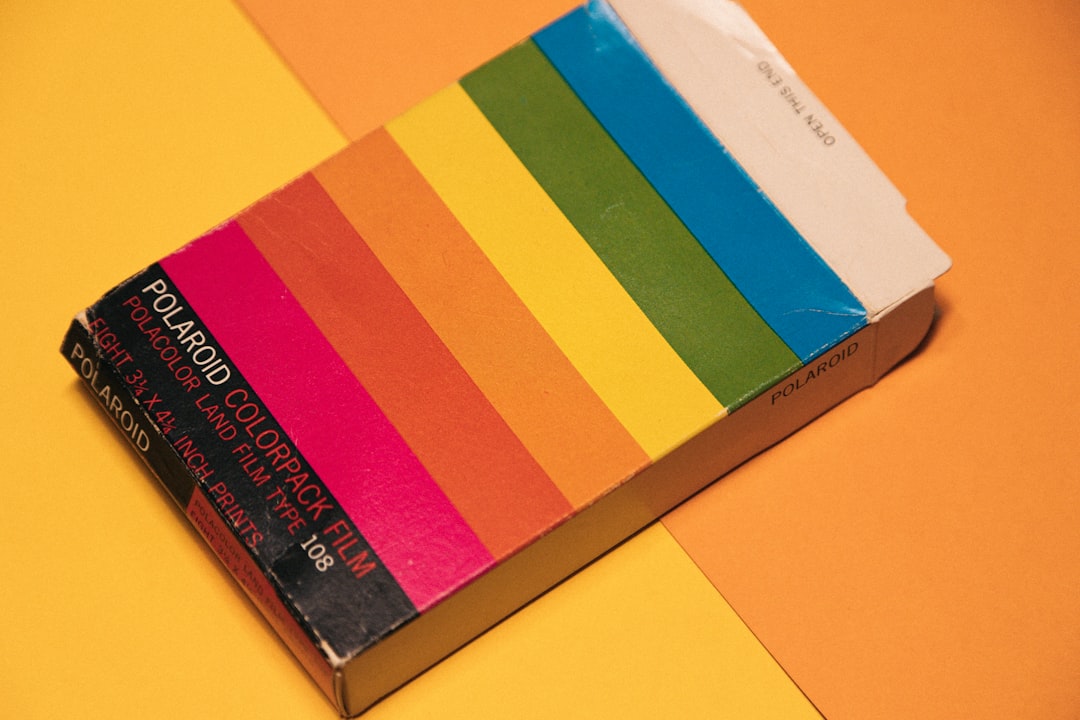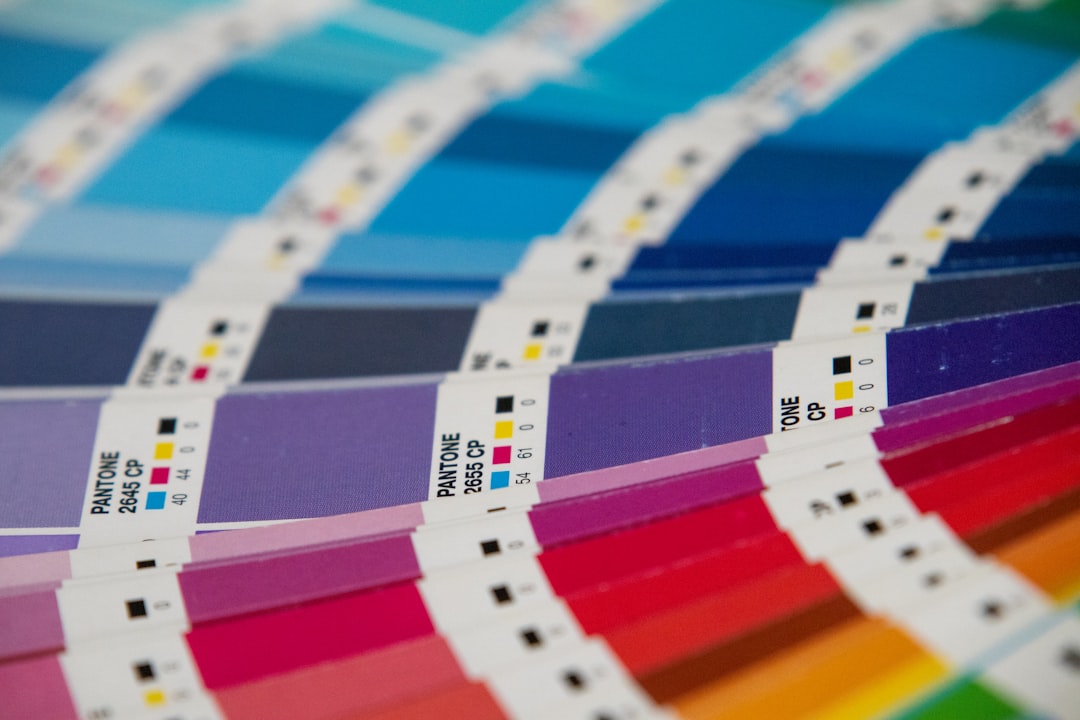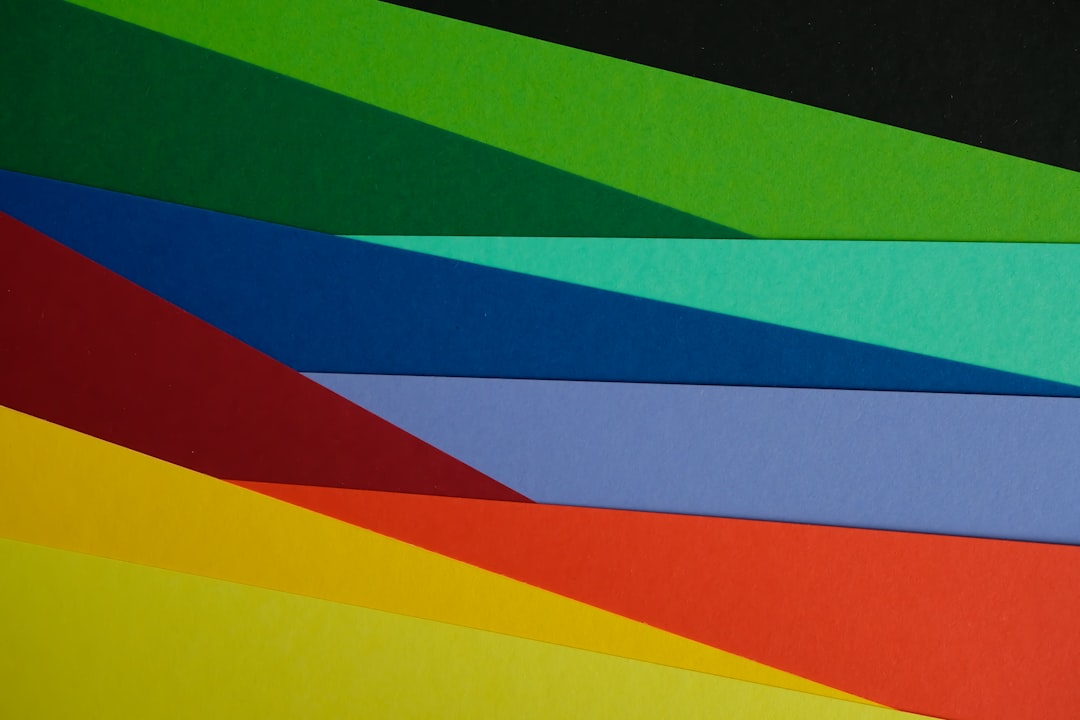

Engage prospects with a scan and streamline customer engagement with FREE QR code marketing tools by Sona – no strings attached!
Create a Free QR CodeFree consultation

No commitment

Engage prospects with a scan and streamline customer engagement with FREE QR code marketing tools by Sona – no strings attached!
Create a Free QR CodeFree consultation

No commitment
In today’s digitally driven world, QR codes have evolved from a novelty to a strategic powerhouse that bridges offline engagement with online action. For color card suppliers, QR codes offer a fast, engaging way to boost conversions by connecting physical marketing assets such as sample swatches, product catalogs, and business cards with rich, trackable digital journeys. This reduces friction and creates seamless interactions, solving a longstanding challenge for the category: the gap between tactile touchpoints and measurable buyer action.
As the market pushes suppliers to serve both wholesale and small business customers with greater speed and flexibility, traditional methods such as manual forms and static brochures are increasingly inadequate. They lead to missed prospects and fragmented engagement data. QR codes offer a unique advantage because they enhance the visual and functional value of color cards and enable suppliers to replace outdated collateral with dynamic, interactive content that adapts to changing product lines, buyer needs, and sustainability goals. For a broader strategy overview, see QR codes in marketing.
By embedding QR codes across marketing and sales touchpoints, suppliers can deliver instant access to up-to-date design templates, detailed catalogs, custom ordering forms, and sustainability credentials. Every scan turns a printed card into a digital access point, helping suppliers surface high-intent buyers and capture actionable data that informs smarter follow-up, better attribution, and stronger sales outcomes. Explore Sona QR’s capabilities for trackable journeys.

Color card suppliers often struggle to convert interest at physical touchpoints into measurable outcomes. A designer picks up a sample, a buyer pockets a brochure, or a reseller grabs a card, but the next step is unclear or inconvenient. Paper forms get lost, and manual data entry causes delays. QR codes solve this by transforming fleeting interactions into immediate digital actions: a scan can open a pre-filled Google Forms guide, a custom quote page, or a curated catalog, which simplifies engagement and increases the likelihood of conversion.
A practical conversion strategy begins with intent-driven use cases and clear measurement. Replace analog processes with QR-enabled flows, reference Sona QR’s use case library, define the conversions that matter most, and use analytics to refine your approach over time. The result is a faster, more transparent path from interest to outcome, with every scan captured and attributed.
Modern platforms make every scan a data point that can be tied to a contact, account, or segment. When connected to your CRM, QR engagement enriches records, prioritizes high-intent leads, and powers personalized nurture programs that move buyers from exploration to purchase.
Historically, suppliers relied on distributing physical samples, collecting handwritten notes, and tracking interest in spreadsheets. These processes are slow, error-prone, and hard to connect to revenue. When prospects engage but do not submit a form, valuable leads are lost. QR codes create an instant bridge from the physical card to a digital workflow. A scan can route the buyer to a dynamic order form, a sample request flow with pre-selected SKUs, or a sustainability page that builds trust with procurement teams.
This modernization reduces manual effort for both the buyer and the supplier. Data flows automatically into your CRM or marketing tools, follow-up can be triggered instantly, and campaign performance becomes measurable. Over time, these small improvements compound into higher conversion rates, lower acquisition costs, and a better customer experience from first touch to reorder.

Color card suppliers have long faced an attribution blind spot. Physical materials might be engaging, but it is hard to see who interacts, what they want, and whether interest converts. Without a clear way to capture intent from print, companies rely on guesswork or delayed follow-ups that miss the moment. QR codes turn static assets into digital entry points that capture interest in real time and guide buyers to meaningful actions.
Beyond visibility, QR codes bring speed, flexibility, and control over messaging and measurement. You can update destinations without reprinting, deliver context-specific content to each audience, and monitor performance to continually improve results. This is particularly valuable when product lines, color sets, certifications, or pricing change frequently.
By connecting physical touchpoints to data-rich digital journeys, QR codes ensure that no valuable lead remains invisible. Suppliers gain line of sight into what works, where attention is highest, and how to move buyers forward without guesswork.

Choosing the right QR format ensures the experience matches buyer intent and context. For color card suppliers, the most valuable formats are those that quickly deliver product detail, enable contact capture, and support on-the-go collaboration between designers, marketers, and procurement teams.
A well-designed QR strategy often combines several formats. For example, a vCard on business cards, dynamic web links on sample kits, and SMS pre-fills for fast reorder prompts. Selecting formats by use case makes printed materials more actionable and significantly easier to measure.
Select formats based on the action you want and the environment where scanning will occur. For example, SMS pre-fills work well in facilities with limited Wi-Fi, while web links are ideal for trade shows and retail environments where visitors browse on mobile data.

The most effective QR placements meet buyers where they already interact with your brand. Every physical touchpoint is a chance to drive action, but some are especially powerful for color card suppliers. Prioritize placements that have historically been hard to measure or have suffered from lost follow-up, then use scan data to prove what works.
Look for the moments when buyers compare finishes, explore color systems, or evaluate sustainability claims. The right QR experience can move them from curiosity to conversion while capturing rich intent data that fuels smarter retargeting and sales outreach.
By embedding QR codes at these high-intent moments, you capture micro-conversions that would otherwise be lost and build a fuller picture of how offline engagement drives pipeline and revenue.
QR use cases should map directly to the most common buyer actions around color selection, specification, and ordering. Each is an opportunity to reduce friction, gather intent data, and deliver a tailored experience that moves buyers toward a decision.
When implemented consistently across your materials, these use cases create a connected journey. A designer scans for inspiration, a buyer scans for certification details, and a procurement lead scans for a bulk quote. Each scan reveals context and accelerates the sales cycle.
These use cases are easy to pilot, and they quickly demonstrate measurable impact: more form fills, shorter time to quote, and better attribution for print materials that previously lived in a data vacuum.
Each QR scan is a signal. It tells you who engaged, what they engaged with, and where they were when they did it. With multiple codes deployed across touchpoints, you can automatically segment audiences and trigger precise follow-up sequences based on behavior. This moves your retargeting from broad assumptions to focused, relevant messaging that resonates.
For color card suppliers, think about audiences across roles and lifecycle stages. Designers, brand managers, and procurement teams engage at different moments and for different reasons. Segment your codes and destinations accordingly to collect clean, intentional data you can use to nurture, upsell, and retain.
With Sona QR, each code becomes a smart entry point that captures the data you need to build high-value audiences. For retargeting tactics powered by first‑party signals, see Sona’s Playbook intent retargeting. Combined with identity resolution on Sona.com, these audiences can be connected to known accounts for coordinated outreach across channels.
QR codes are powerful connectors across print, digital, and in-person channels. They help unify your messaging and measurement so that offline interactions feed directly into your digital marketing engine. For color card suppliers, this means your catalogs, kits, events, and displays can all contribute to a single, trackable customer journey.
This integration also improves decision-making. You can see which channels drive the most engagement, compare performance across placements, and refine creative and offers based on real data. Over time, your multi-channel mix becomes both more effective and more efficient.
QR codes bring a new layer of accountability to channels that used to be difficult to measure. With a centralized platform like Sona QR, you can manage codes, monitor performance, and sync scan activity to your CRM and ad platforms for continuous optimization.
A disciplined execution process prevents broken experiences, unreadable codes, and missed attribution. Use this checklist to launch QR campaigns that are reliable, trackable, and conversion-focused from day one. The goal is not only to get scans but to turn scans into meaningful actions that move the buyer forward.
In color card workflows, pay special attention to material choice, code contrast, and scan distance. Many assets are glossy, textured, or viewed under varied lighting conditions at trade shows or in retail environments. Design and testing should reflect real-world use.
Define exactly what you want the scan to accomplish. For example, increase sample requests for a new finish, capture wholesale quote inquiries during a trade show, or drive reorders from packaging inserts. Clear goals lead to better code placement and more relevant landing pages.
Your code type determines what you can measure and change later. Static codes are fine for evergreen destinations. Dynamic codes let you track scans and update links without reprinting, which is ideal for campaigns and assets that evolve.
Treat QR design as part of your visual hierarchy. Communicate the benefit near the code, use strong contrast for scannability, and place the code where the eye naturally travels. Then test thoroughly across devices, distances, and lighting.
Start where attention is highest and follow-up has historically been inconsistent. A good deployment plan includes trade show assets, packaging, and print collateral, then expands based on performance.
Analytics turn scans into insights. Monitor key metrics and refine your approach regularly. Small design changes or repositioning can produce large gains in scan and conversion rates.
For many color card suppliers, the challenge is not capturing attention, it is proving what that attention is worth. Without robust analytics, it is difficult to connect a scan at a booth or on a package to an actual sales conversation or reorder. A modern analytics stack eliminates this gap by capturing scan context, tying it to contacts and accounts, and attributing downstream revenue.
Sona QR and Sona.com work together to make this practical. Sona QR records every scan event with device, time, and location, then syncs to your CRM. Sona.com adds identity resolution and multi-touch attribution, which connects scan activity to website visits, email engagement, ad clicks, quotes, and orders. For methodology and measurement, see Sona’s guide to offline attribution.
When scan data becomes part of your performance marketing strategy, you can confidently scale what works, cut what does not, and show marketing’s direct impact on revenue.
Scaling QR effectively requires thoughtful operations. You want clean data, consistent follow-up, and experiences that make scanning feel worthwhile. A few best practices go a long way toward increasing scan rates and conversion quality.
Focus on clarity and context at every step. A bold CTA that promises a specific benefit will outperform a generic Scan me prompt. Pair that with automation and you turn a single scan into a sequence that builds momentum toward a sale or reorder.
Creative deployments can also keep engagement high. For instance, place a QR code on a color matching reference card that unlocks a downloadable palette library, or add a code to invoices that opens a one-click reorder flow for frequently purchased SKUs.

Results come fastest when QR codes solve real, observed problems in the field. Whether it is lost business cards, slow sample requests, or unanswered eco-credential questions, choose use cases with clear value for the buyer and measurable impact for the business.
Look for inspiration in how peers use QR to shorten time-to-quote, scale post-event follow-up, and build trust through transparency. Adapt the mechanics to your product lines and buyer personas so the experience feels tailored rather than generic.
These examples demonstrate a consistent theme: QR codes work best when they remove friction, deliver utility, and capture data that fuels the next touch.
The difference between average and exceptional QR performance often comes down to fundamentals. Clear CTAs, proper placement, and mobile-optimized destinations are non-negotiable. Conversely, ambiguous language, poor contrast, and cluttered layouts discourage scanning and undermine results.
Align creative, technical, and operational considerations. Validate that every code reliably scans on real materials, that the landing pages load fast on mobile, and that follow-up is automated with context from the scan. These basics protect the user experience and keep your pipeline clean.
Expert guidance consistently emphasizes simplicity and clarity. The more obvious the value and the easier the path, the more scans convert into qualified activity and revenue.
For color card suppliers facing complex buying journeys and rising expectations, QR codes are more than a convenient link. They are a strategic way to turn every physical surface into a digital entry point and every moment of interest into measurable action. By embedding QR experiences across catalogs, samples, packaging, and events, you create a connected journey that moves prospects from awareness to quote to reorder with less friction and greater visibility.
The benefits compound quickly. Instant engagement, flexible content, and strong analytics come together to produce a marketing and sales system that is faster, smarter, and more accountable. With Sona QR, you can generate, manage, and track codes at scale, then use Sona.com to attribute scans to pipeline and revenue for a complete view of performance.
Color card suppliers do not have to accept anonymous lead loss or opaque print performance. With a thoughtful QR strategy, each sample, card, and display becomes a springboard for growth. Start by identifying one or two high-impact use cases, launch with dynamic codes and clean CTAs, and iterate using scan and conversion data. Start creating QR codes for free.
QR codes have transformed the color card suppliers industry from simple product displays into powerful, measurable conversion tools. Whether it’s attracting new clients, enhancing customer interaction through instant access to detailed color options, or streamlining ordering processes, QR codes replace static catalogs with interactive experiences that drive sales and build loyalty. Imagine knowing exactly which color cards capture your customers’ attention and influence their buying decisions in real time.
With Sona QR, creating dynamic, trackable QR codes is effortless. Update your campaigns instantly without reprinting, connect every scan to actionable insights, and optimize your marketing to maximize revenue. No more guessing—just clear data that helps you convert prospects into repeat buyers.
Start for free with Sona QR today and transform every color card scan into a powerful step toward growing your business.
QR codes help color card suppliers bridge offline and online engagement by turning physical materials into trackable digital touchpoints, enabling faster conversions, flexible content updates, real-time data capture, and improved sales attribution.
By embedding QR codes on business cards, suppliers can provide instant access to contact information, design templates, or ordering forms, making the cards interactive and improving lead capture and follow-up.
Color card suppliers can embed QR codes that link to up-to-date design templates, digital color libraries, and Pantone equivalency charts, allowing buyers and designers to access these resources instantly.
Static QR codes are suitable for permanent, unchanging content, while dynamic QR codes are ideal for campaigns and evolving product lines because they allow link updates and detailed tracking without reprinting.
Place QR codes where buyers make decisions or seek details, such as packaging, sample kits, trade show displays, business cards, and direct mail, ensuring strong contrast, sufficient quiet space, and clear calls to action.
Suppliers can use analytics to monitor scan volume, location, device type, and follow-on actions, integrate scan data with CRM systems, and attribute revenue to assess which codes and placements drive the best results.
Integrating QR codes across print, digital, and in-person channels unifies messaging and measurement, allowing suppliers to track customer journeys, optimize campaigns, and improve ROI by connecting offline interactions with online data.
QR codes on packaging or product samples can link to eco-friendly product information, certifications, recycled content details, and disposal instructions, building trust with sustainability-conscious buyers.
Useful formats include web links for landing pages, vCards to save contact info, email or SMS pre-fills for quick requests, app downloads for collaboration tools, and dynamic codes for updatable content.
By tagging QR codes by journey stage, audience role, and placement, suppliers can segment scan data, sync it with CRM and ad platforms, and trigger personalized follow-up sequences based on buyer behavior and intent.
Avoid unclear calls to action, poor contrast, placing codes on folds or glossy surfaces without testing, and neglecting mobile optimization and regular analytics review to maintain effective scanning and conversion.
Begin by selecting high-impact use cases, create dynamic QR codes with clear CTAs, test code placement and design for scannability, deploy on key touchpoints like trade shows and packaging, then track and optimize using analytics.
Suppliers like Aura Print and Vistaprint offer QR-ready business cards and print collateral designed for reliable scanning and integration with digital campaigns.
Use Sona QR's trackable codes to improve customer acquisition and engagement today.
Create Your FREE Trackable QR Code in SecondsJoin results-focused teams combining Sona Platform automation with advanced Google Ads strategies to scale lead generation

Connect your existing CRM

Free Account Enrichment

No setup fees
No commitment required

Free consultation

Get a custom Google Ads roadmap for your business






Launch campaigns that generate qualified leads in 30 days or less.
